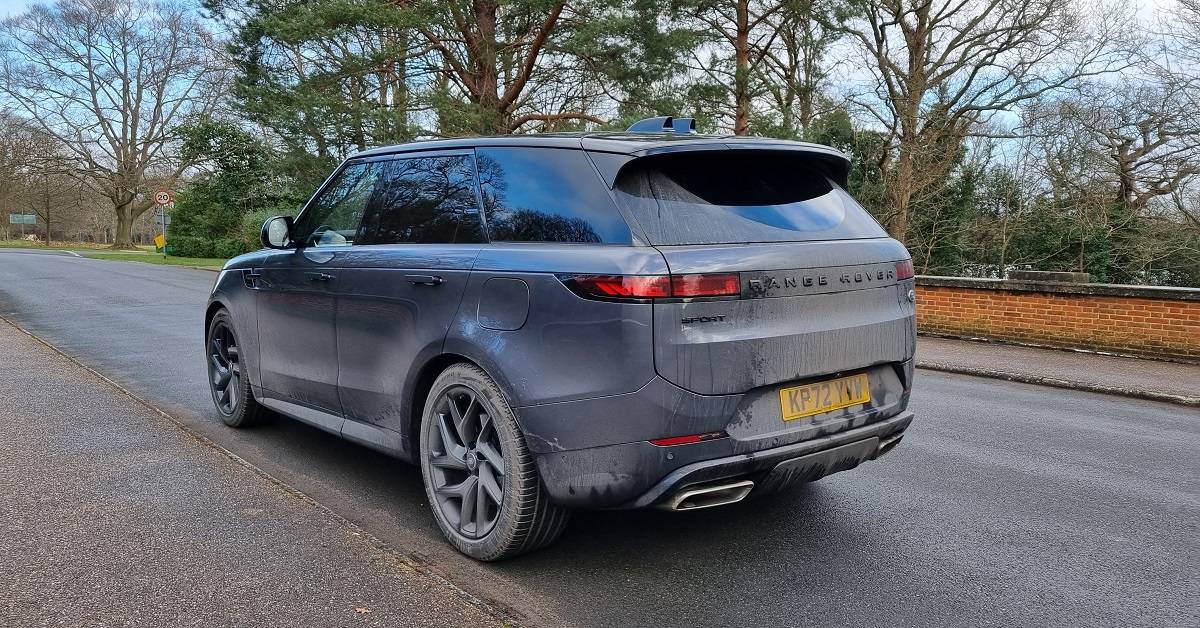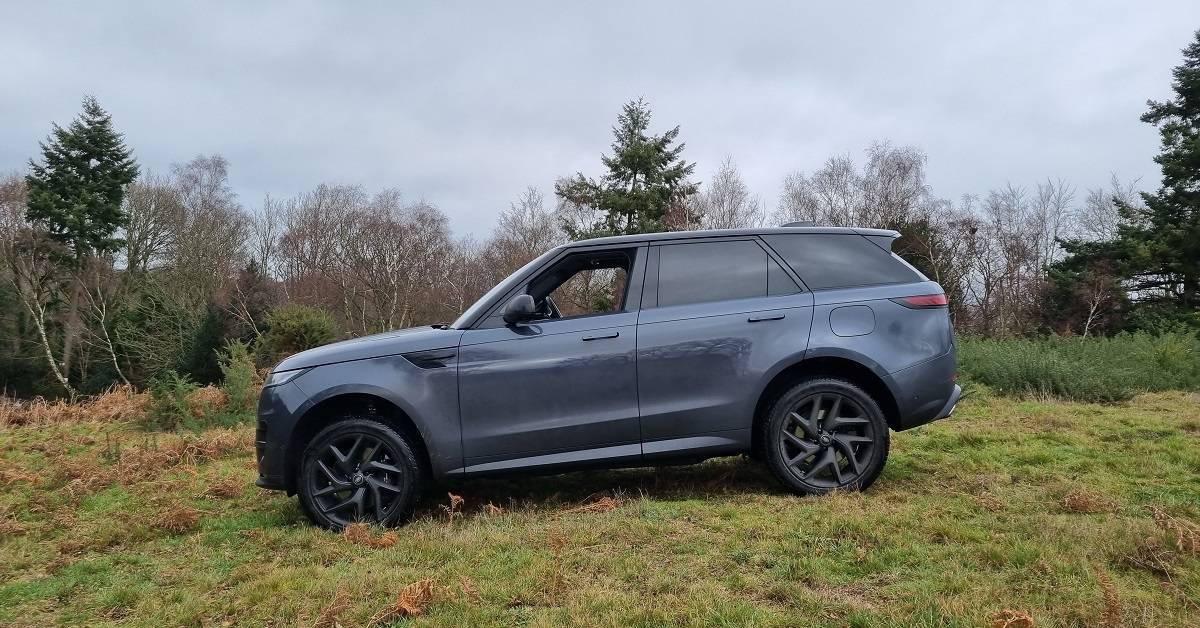Hybrids seem stuck in something of a curious purgatory. The ban on internal combustion engine sales in the UK will arrive in 2030, with the ban on the sale of hybrids following in 2035 as the government seeks to move blindly into an electric future. These dates, you’d think, will surely change, but let’s not bank on it. Tax incentives have been handed out to encourage people towards EVs and hybrids, with manufacturers slapping batteries into their existing fleets to entice business customers with significantly lower BIK rates. This has resulted in some truly appalling cars and tarnished the reputation of hybrids. Is the tide, however, turning? A week with the new Range Rover Sport P400e offered the chance to find out.
I might have been unkind on hybrids from the outset. My experience of them has been mixed. On the one hand, the Cupra Formentor e-hybrid was clearly assembled to make money over any consideration for assembling a good car; on the other, the exceptional Polestar 1, built from the ground up to be a hybrid. In the middle, a car like the Audi A8L 60 TFSIe which imperceptibly blends engine and battery to deliver a refined experience. Where does the Range Rover Sport sit?
The on-paper numbers are encouraging. 70 miles of pure electric range immediately appeals. As does the overall package of the car. The design evolution across the Range Rover range has placed an emphasis on minimalism which I really like. Judging by the number of Range Rover Sports seen on the road, it’s a package that carries broad appeal. It’s spacious, well appointed and good looking with a range of powertrains available. Something for everyone?
Living with the Range Rover Sport
We’ll debunk the electric range immediately because of course it’s not actually 70 miles. I got 43 out of a single charge which isn’t nearly as bad as it sounds. Using it to crawl through west London traffic en route to work, shifting 2.8 tons is going to deplete any battery. There’s certainly enough usable range to render petrol obsolete for most journeys you’ll be completing.

On the motorway, a run to Coventry returned 32mpg when using the petrol tank alone. At higher speeds, the energy required to keep the Range Rover Sport moving is too much for the battery alone, so the engine is required to keep things moving.
In normal scenarios, leaving the car in its hybrid setting, the engine steps in swiftly and unnoticed to support the battery. If you need to make a gap or get away from the lights quickly, both systems working in tandem provide 440hp and 620Nm of torque, with 0-60mph ticked off in 5.5secs. Even when left in electric only mode, however, there’s enough power to keep you progressing.
Away from the powertrain, the Range Rover Sport, as you would expect, is a great environment to be in. The Range Rover Sport P400e HSE, as tested, comes well equipped, with plush heated and ventilated leather seats, Range Rover’s latest infotainment system (which is a big step up from the previous one), panoramic roof, Meridian audio and plenty of noise deadening materials. It’s a hushed environment.
There’s plenty of space in the rear, whilst the front passenger seat can be moved to provide extra legroom for the rear occupant. In the boot, there’s no load space penalty when opting for hybrid over ICE, so there’s plenty of room.
What’s the Range Rover Sport like to drive?
The ‘sport’ moniker promises much, although unlike the previous generation, the new Range Rover Sport SVR hasn’t been revealed yet. That said, the Range Rover Sport P400e is noticeably more engaging to drive than its big brother, the Range Rover. Where that’s more of an arm around the shoulder type driving companion, the Range Rover Sport encourages you explore its performance and dynamic capabilities more keenly.
The model tested came equipped with the Stormer Handling pack, which introduces an electronic active dif, dynamic air suspension and all wheel steering. The ride quality, as you’d reasonably expect, is exceptional. The Range Rover Sport glides along unperturbed by the myriad potholes and scarring on our roads.

On more dynamically testing roads, the Range Rover Sport is surprisingly enjoyable. There’s a pleasing amount of body roll and plenty of traction to work with, even if it lacks the outright headline grabbing performance figures of some of the competition. I’m sure the SVR version will address that.
The steering is perhaps a little too keen at times, though. The wheel is always insistent on returning to centre, whether in comfort or dynamic mode. This is fine when blasting down B-roads, but a bit irritating when taking sweeping bends on more open roads. You have to battle the steering wheel to keep it just off centre, which can grow tiresome. It does have lane keep assist, but there’s a tendency for it to ping-pong between the lines of your lane.
That was my only complaint. It doesn’t feel as imposing as the Range Rover and is more accessible as a result. All the clever camera tech makes parking and traversing tight spaces surprisingly calm in such a large car and the all-wheel steering is definitely worth having.
Taking the Range Rover Sport off road
One thing that gets lost in the modern SUV concept is their off-road ability. Where some SUVs have undoubtedly moved away from the 4X4 origins of the genre, Range Rover have not. Like the full fat version, the Range Rover Sport comes with proper off-road credentials.
A friend of mine owns some farming land (hi, Ben!) and offered the opportunity to put the Range Rover Sport to a more rugged test than it will likely ever be required to pass by owners. Who, after all, is going to take their £98,990 (as tested) car to do some serious off roading?
That said, if they do, the Range Rover Sport will take it all in its stride. Hill descent control, low range gearing, all manner of technology to let you know what’s going on; the Range Rover Sport will tackle terrain its competition simply will not. Muddy fields, awkward inclines; it’s all in a day’s work.

What was arguably more impressive is that it tackled everything in pure electric mode, too. It didn’t require the extra shove from the engine to get it out of tight spots. Granted, I was hardly taking it up a mountain, but it handled a tricky scenario with consummate ease.
Whilst this is almost certainly irrelevant to any decision as regards buying one, I guess it’s nice to know that option is in the back pocket. In the name of serious journalism, it would have been remiss of me not to tackle a few climbs and maybe pull off a couple of power slides in a field. It’s a niche USP, but the Range Rover Sport certainly entertained in more unusual circumstances. With my curiosity satisfied, it was off to the pub for a debrief.
Conclusion
The broad remit of the Range Rover Sport is comprehensively met in the third generation vehicle. From motorways to mud ruts, it ticks the boxes for style and luxury, whilst satisfying the need for engagement and proper off road capability.
Is the hybrid version the way to go, though? This ultimately depends on your circumstances. For business users, yes it is. For personal users, there’s more to consider. Is the extra weight of the battery worth what equates to roughly an extra gallon and a half of fuel? Having experienced the D350 in the Range Rover, I’d be tempted to go down that route.
It is, however, a good hybrid. With 12 years left of their sales, the Range Rover Sport P400e represents a step in the right direction. It’s more than just a battery slammed in the boot to attract business customers. It doesn’t impede on internal space and has a real world range that is genuinely useful. The switch between battery and ICE is also very well managed, the engine butting in at just the right time to support the battery.
Whilst hybrids were once a necessary compromise to keep tax costs under control, the Range Rover Sport at least shows that if you want one and you’re paying with your own money, then it’s very much a viable option. If you can charge easily at home or work, then it will undoubtedly reduce your visits to the pump. There’s also something rather appealing about breezing around in such a huge car in total silence. That you can do the same around a farm is an oddly satisfying bonus.
Related article: TLE drives the Range Rover Velar

